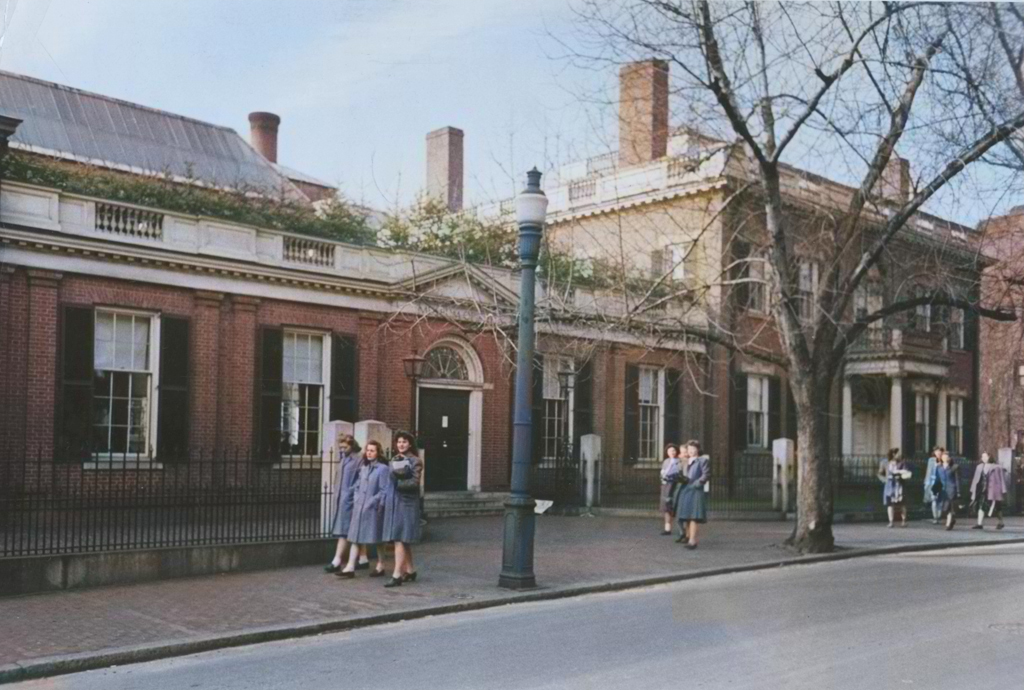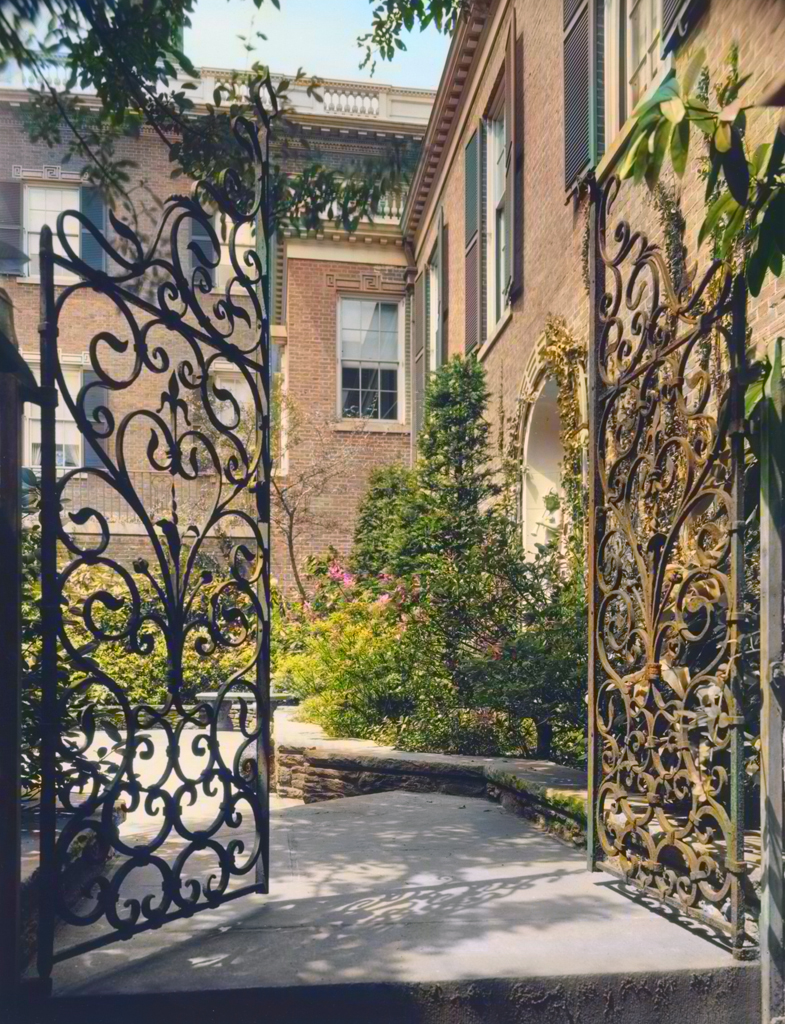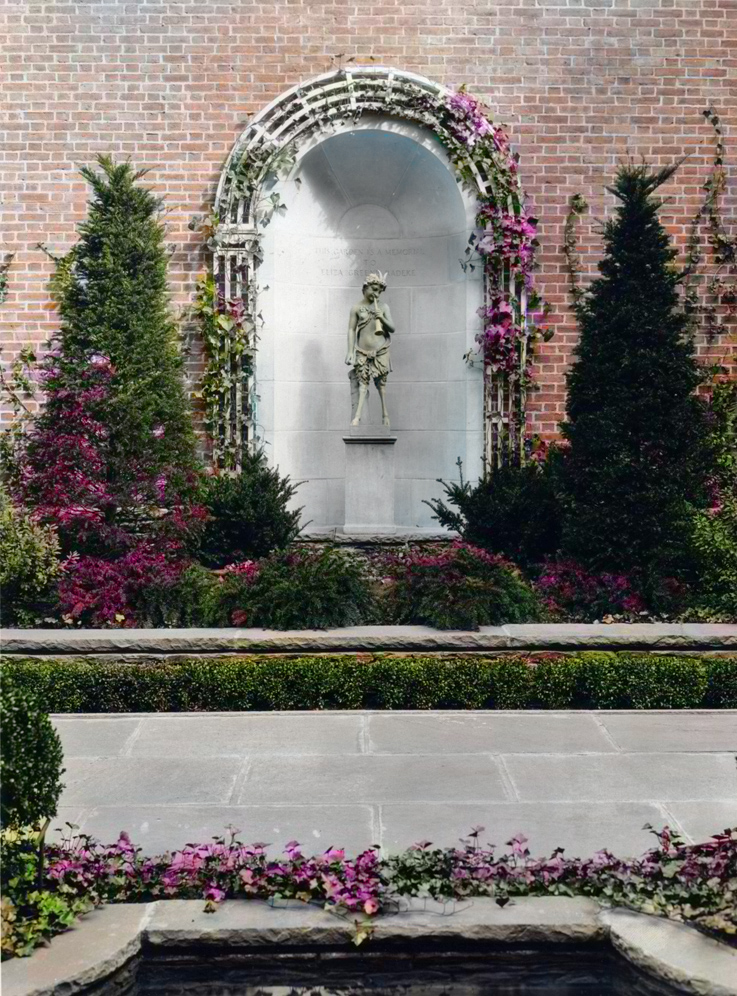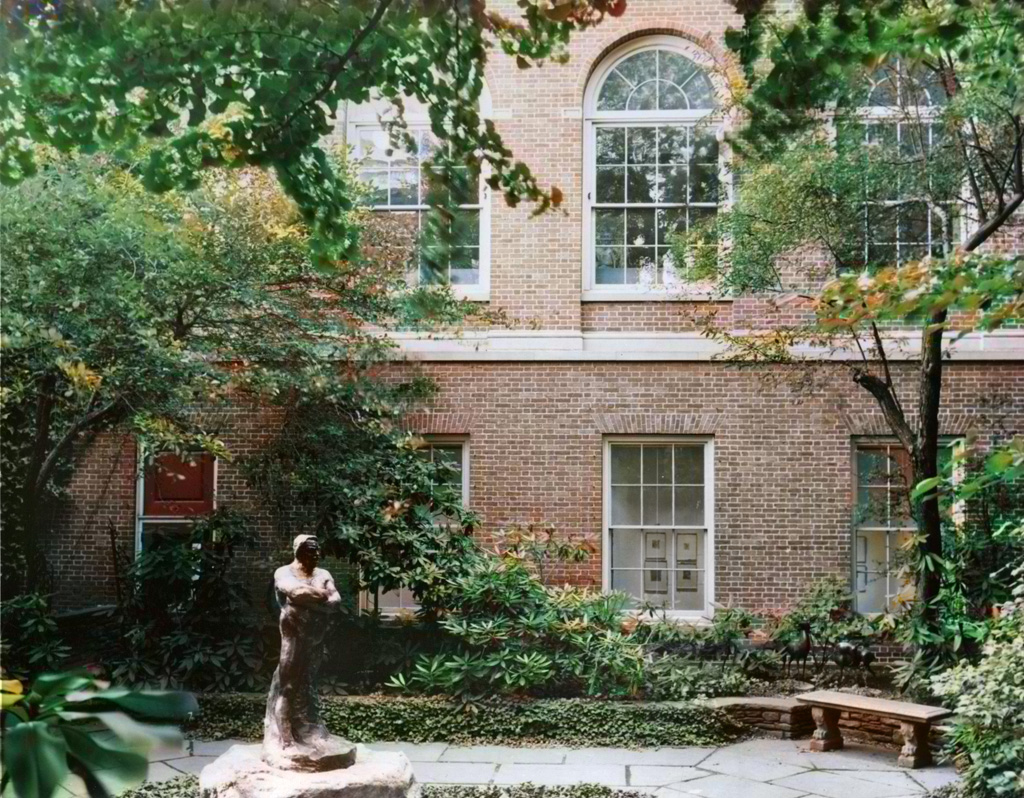Rhode Island School of Design’s Pendleton Museum was a prime spot on the 1930s ‘Lovecraft tour’ of Providence, given to visiting members of the Lovecraft circle by Lovecraft himself. The Pendleton was an annexe to its main art galleries, one dedicated to colonial life as it had been lived, and it was thus a favourite Providence spot for Lovecraft.
Benefit Street, with the back end of the School of Art Museum and Pendleton House nestled alongside it on the right of the picture.
Pendleton Museum (or ‘Pendleton House’) was on Benefit Street but apparently had long had its public ‘entrance through Waterman St.’, rather than its own front entrance on Benefit. Here we see the arrangement on an early map. The map does not show the museum’s extension, present during Lovecraft’s life, which curved along the steep hillside and around Pendleton…
Public visitors would thus have had to walk through the Rhode Island School of Design galleries in order to reach the House. In “1897-8-9” the RISD entrance gallery at Waterman Street had been “an enchanted world” for the boy Lovecraft, due to the array of Greek and Roman reproduction sculpture.
In 1936, at the other end of his life, Lovecraft appears to have preferred the other end of the walk. Lovecraft told Galpin that he found the Pendleton Museum… “a perfect reproduction of a colonial mansion, containing the finest collection of American colonial furniture in the world.” There appears to them have been a connector in Lovecraft’s time, from the House to the newer art galleries on the slope below…
Attached to the north side of Pendleton House is a tiny arched, columned hexagonal adjunct no larger than a gazebo, with an interior dome. Exquisitely designed in the Neo-Renaissance manner, it provides the vestibule (out of the Pendleton House dining room) for Charles Platt’s stairway connector down the slope, through a (subsequently revamped) corridor gallery, also designed by Platt, to link the house with the so-called Waterman Galleries below.” (Society of Architectural Historians)
There were further additions. The Pendleton Museum was set to be matched with a long-anticipated new Colonial style courtyard garden, the Radeke Memorial Garden, but the project was delayed again and again until finally the plans for it were drawn up in 1933, and the Garden was not eventually realised until 1934. It was the sort of event and project that Lovecraft would have been on hand to support, and he had attended the opening of the Radeke museum extension in late April 1926. But I’m uncertain if he was also invited to the opening event for the garden. I have a vague recollection that he was there for the opening and he remarked that the garden was a little sparse in its initial planting (the opening event was sans plants but they were soon added). But I could be mis-remembering, and I can’t re-find the item.
I’ve now found good pictures of this garden, as Lovecraft would have experienced it in the years before his death as he took friends around the house, and presumably also the new garden. Though the 1934-37 planting was perhaps a little less established than seen in these newly colourised pictures. With thanks to the RISD Archive.
The statue in the niche is Pan depicted as a boy, woolly-shanked, cloven-hoofed and playing pipes. Lovecraft would surely have approved, and recalled his own sylvan boyhood shrines to Pan.
“There were in that Street many trees; elms and oaks and maples of dignity; so that in the summer the scene was all soft verdure and twittering bird-song. And behind the houses were walled rose-gardens with hedged paths and sundials, where at evening the moon and stars would shine bewitchingly while fragrant blossoms glistened with dew.” (Lovecraft, “The Street”)
The Radeke garden was restored to its original white scheme in the 1980s. It appears to be open to the public today (though may be found to be rented for weddings at weekends), and thus could be included on a Lovecraft-related tour of the city.






